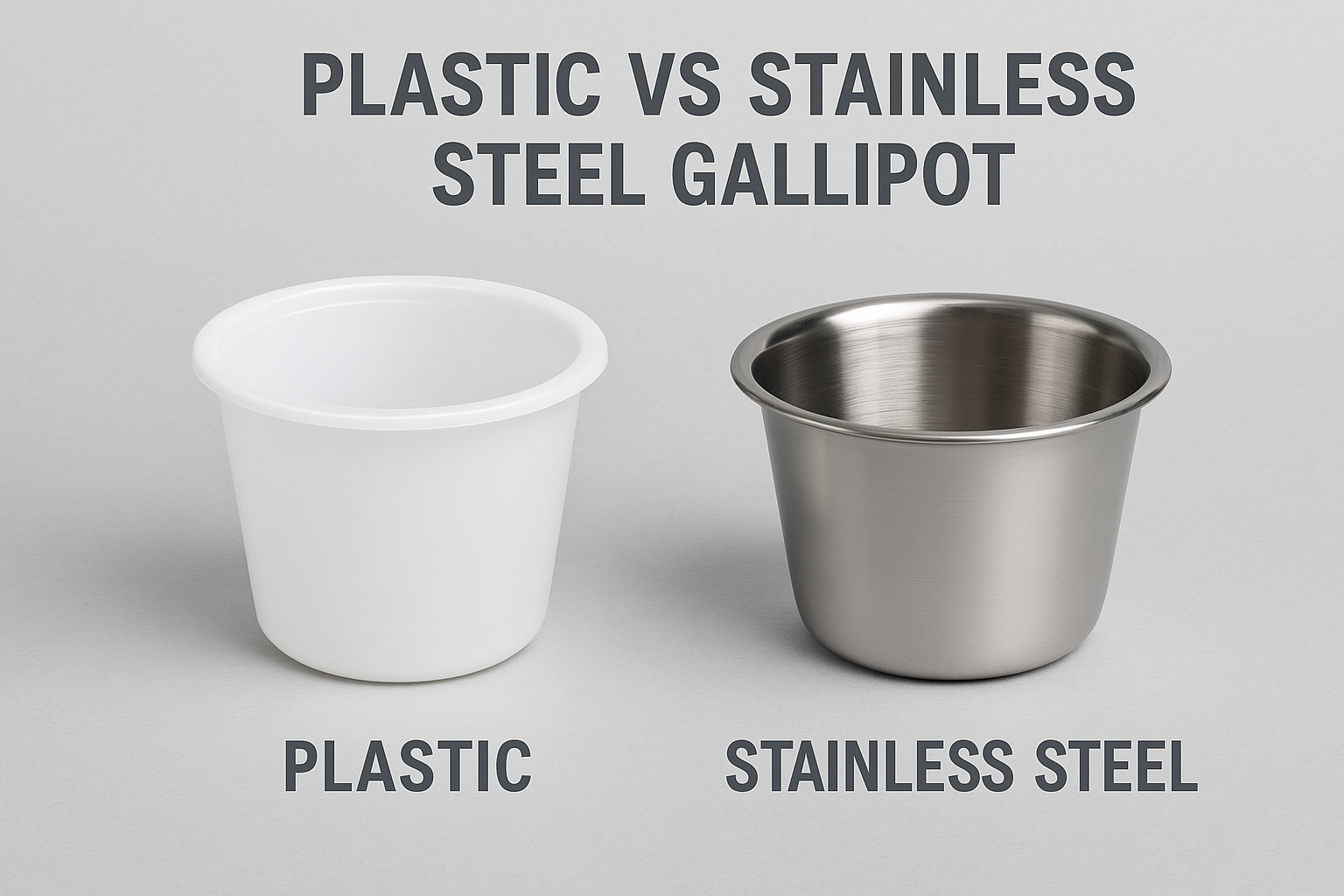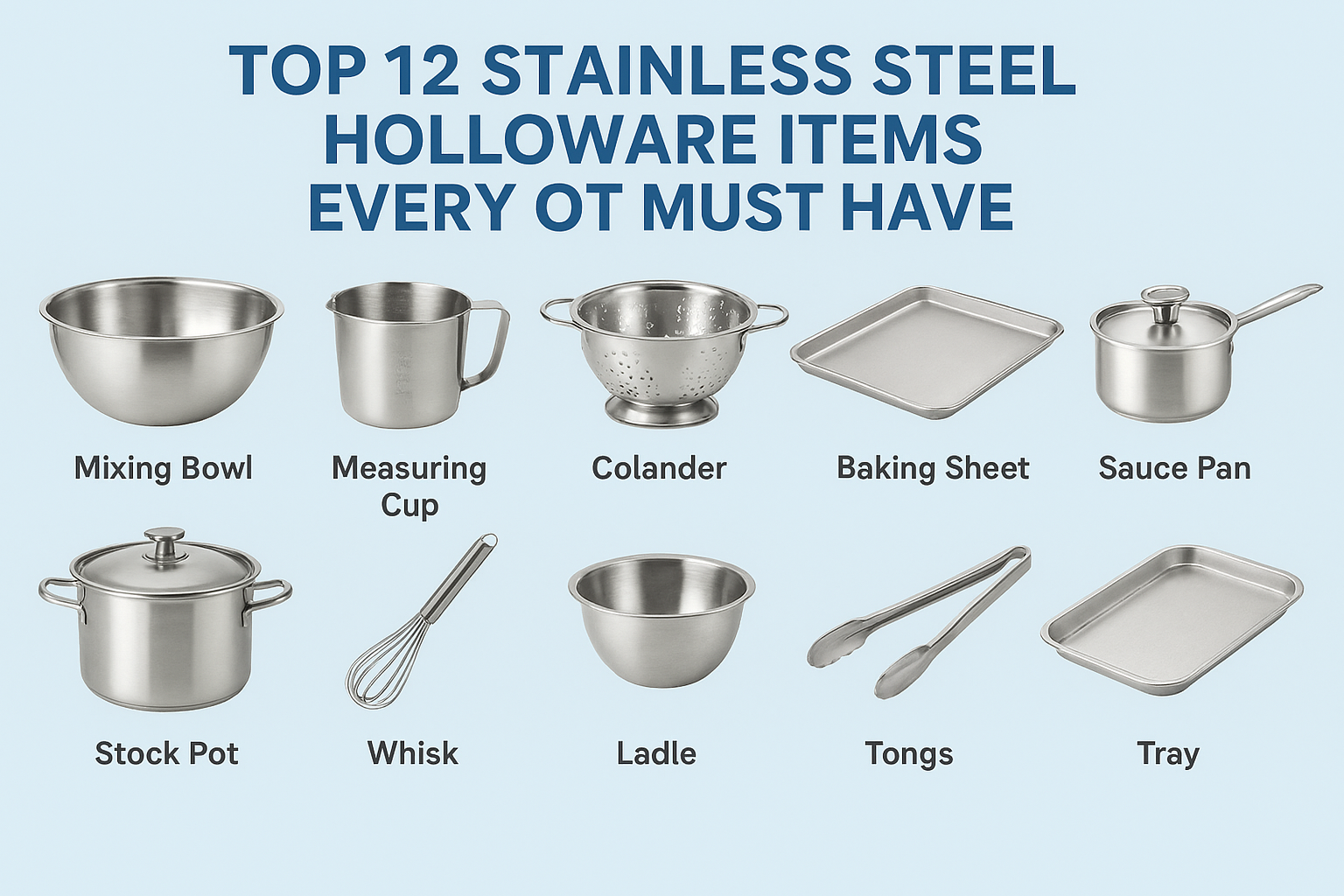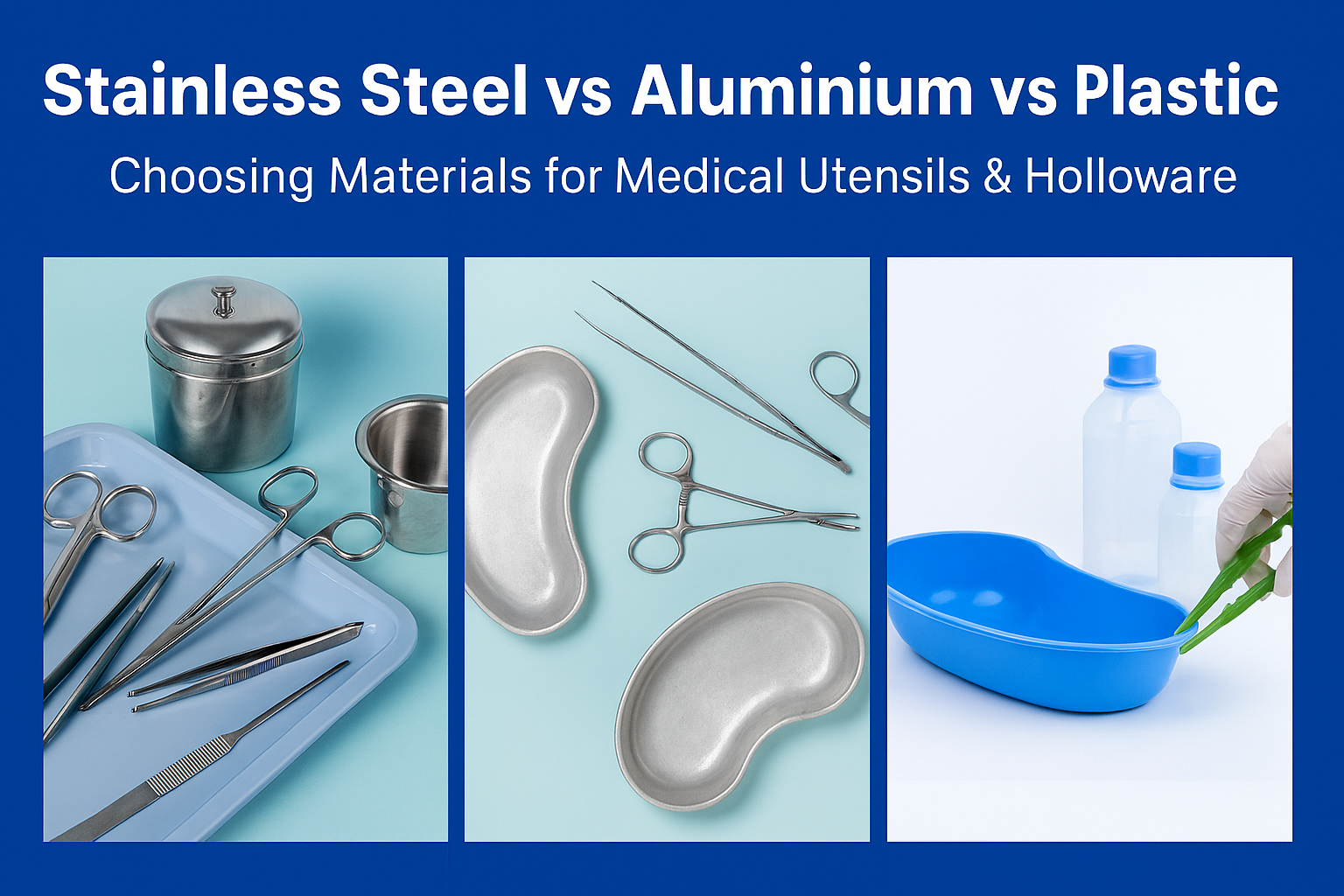Choosing the right equipment for medical settings is important for safety, ease of use and patient care.
One such commonly used tool in healthcare facilities is the Gallipot. However, when it comes to choosing the right gallipot for the clinical or hospital settings, healthcare professionals are often faced with the decision – plastic vs stainless steel gallipots.
The selection of the material significantly impacts cost, hygiene, durability and sustainability.
What is a Gallipot?
A gallipot is a small container used in medical procedures to hold liquids, creams, swabs or instruments during diagnostics or surgical procedures. These bowls are important in maintaining sterile workflows and are available in varied sizes and materials like plastic and stainless steel.
Benefits of Stainless Steel Gallipots – Why they are Widely Preferred?
- Highly Durable: The stainless steel gallipots are engineered to last through repeated use without cracking, breaking or warping.
- Autoclavable: They can withstand high-temperature sterilization ensuring complete disinfection.
- Resistant to Corrosion: The stainless steel gallipots do not rust or degrade when exposed to water, chemicals or bodily fluids.
- Sustainable: The bowls are sustainable in the sense that they can be reused. This reduces the medical waste. When seeking eco-friendly gallipot options for your healthcare facility, consider those made from stainless steel.
- Cost-Effective: The stainless steel bowls are durable and do not need to be replaced often making them economical over time.
- Safe and Hygienic: Stainless Steel Gallipots have a non-porous surface reducing bacterial retention and enhancing patient safety.
- Versatile Use: The bowls are used for a wide range of clinical applications from surgeries to wound dressing.
Considering the above benefits, stainless steel is the best material for surgical gallipots.
Plastic Gallipot Disadvantages
- One-Time Use: A significant disadvantage of plastic bowls in healthcare the healthcare sector is that they are designed for single use. This contributes to increased medical waste and frequent costs for replacing them.
- Limited Durability: Plastic is prone to cracking, warping or breaking under harsh conditions or after multiple uses.
- Lower Sterilization Capacity: The plastic bowls cannot be autoclaved at high temperatures like stainless steel, reducing their reuse potential.
- Less Hygiene: The porous surface of the plastic may harbour bacteria and contaminants over time making them less hygienic for clinics and hospitals.
- Ecological Impact: Single-use plastics contribute to the growing plastic pollution problem, harming the environment.
- Chemical Reactivity: Some plastics may react with certain medications or chemicals, potentially altering their effectiveness.
- Not Heat Resistant: The plastics lose shape or degrade if exposed to high heat or sterilization methods.
- Not a Cost-Effective Option: While these gallipots are cheaper initially, they need constant replacement adding up the cost over time.
- High-Risk Areas: In critical care and surgical environments, plastic may not meet the sterility norms as required.
Are Plastic Gallipots Safe for Material Use?
They are a good option for everyday clinical use. These bowls are easy to store, lightweight and reduce the need for reprocessing. In outpatient departments, emergency medical camps and field healthcare settings, the plastic gallipots offer unmatched convenience.
Compare Stainless Steel and Plastic Gallipots
- Durability and Reusability: The stainless steel bowls stand out for their long lifespan and are highly durable. They can withstand repeated autoclaving and harsh sterilization processes without degrading in quality. The plastic bowls are convenient and are designed for single use. Reusable plastic options are available but they tend to wear down faster. When considering between disposable v/s reusable gallipots, consider stainless steel bowls for high-frequency and long-term use.
- Hygiene: The stainless steel bowls are non-porous and highly resistant to bacteria and contaminants. They can be sterilized using high-temperature autoclaves and chemical disinfectants without affecting their integrity. The plastic gallipots, especially the single-use ones reduce the cross-contamination risk. The reusable plastic gallipots may not withstand high-temperature sterilization and could retain microscopic contaminants over time.
- Sustainability: The stainless steel gallipots are an eco-friendly option. They can be reusable for years and they reduce the volume of medical waste generated. The single-use plastics contribute to medical waste. Even though the plastics are recyclable, most end up in landfills.
- Cost-Effective: The stainless steel bowls have higher initial investment but long-term savings due to durability and reusability making them a cost-effective option. Plastic Gallipots are low-cost and ideal for disposable use. They are cost-effective options for large- scale outpatient or temporary setups.
- Wide Applications: The stainless steel bowls have applications in different medical settings. They are used in operation theatres, emergency rooms and intensive care units where the equipment requires frequent sterilization and high durability. The plastic gallipots are used in general wards, outpatient clinics and dressing rooms for holding antiseptics, dressings and ointments.
How to Choose Gallipots for Medical Use?
Before choosing plastic or stainless steel gallipots, assess the following-
- Frequency of Use: Check the frequency of use of gallipots in your clinics or healthcare facility.
- Sterilization: If you do not have the equipment to sterilize, then plastic bowls are a preferred choice.
- Sustainable: If you prioritize sustainability, a stainless steel gallipot is a go-to option.
- Budget: Stainless steel bowls are cost-effective in the long term as they are durable and do not need frequent replacement.
Current Trend- Moving Towards Eco-Friendly Option
With an increasing focus on sustainability in healthcare, more healthcare facilities are moving towards reusable gallipots, especially stainless steel ones. This move minimizes waste and also promotes better control over infection and hygiene.
Both plastic and stainless steel gallipots serve an important role in the healthcare sector. The hospitals and clinics must evaluate their needs and select the material that aligns best with their operations. However, considering the many benefits of stainless steel gallipots, many healthcare professionals are opting for the stainless steel gallipot.
FAQs
- Which Gallipot Material is better for hospitals?
Stainless Steel Gallipot materials are better for hospitals because they are durable, cost-effective, and sustainable and can withstand high temperatures. United Poly manufactures the best quality stainless steel gallipots aligned with your healthcare facility’s needs. - Why choose stainless steel over plastic gallipots?
Stainless steel gallipots are preferred over plastics because they are durable, reusable, have superior hygiene and are cost-effective in the long run. - What makes United Poly Gallipot stand out?
United Poly Gallipots stand out for their seamless construction, precision engineering, versatile applications and adherence to strict quality norms.






